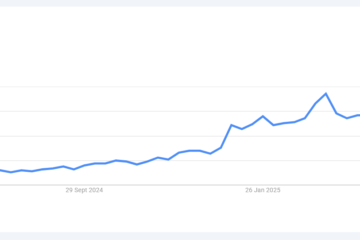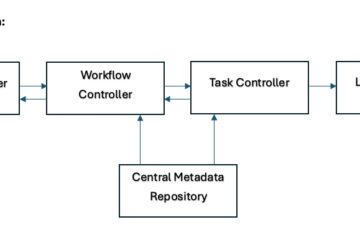Excess body fat is a concern for most people around the world, but not all fat is the same. Among the different types of fat, visceral fat is the most dangerous because it has a negative impact on our health. Unlike subcutaneous fat, which is located just under the skin, visceral fat surrounds vital organs such as the liver, pancreas, and intestines. If visceral fat is in excess, it can lead to serious health risks such as heart disease, diabetes and metabolic disorders.
In this blog, we will explore what visceral fat is, its symptoms and causes, the risks, and different ways to get rid of visceral fat and improve overall well-being.
What is visceral fat?
Visceral fat is a type of body fat that is stored deep within the abdominal cavity, surrounding the internal organs. Unlike subcutaneous fat, visceral fat is more metabolically active. It releases inflammatory compounds that can disrupt bodily functions and lead to health conditions such as:
- Heart disease
- Type 2 diabetes
- High blood pressure
- Liver disease
- Hormonal imbalance
- Back pain
- Fertility problems
- Osteoarthritis
- Asthma
- Cancer
Now, let’s look at the symptoms and causes behind its accumulation.
How do I know if I have visceral fat?
Visceral fat can be difficult to identify because it is stored deep within the body. However, some indicators can help you determine whether or not you have high levels of fat:
- Health symptoms: High blood pressure, insulin resistance, and abnormal cholesterol levels can be signs of excess visceral fat.
- Waist Measurement: A waist circumference greater than 40 inches (102 cm) for men and 35 inches (88 cm) for women suggests optimal body fat.
- Body Shape: People with an “apple-shaped” body, where most of the fat is concentrated around the abdomen, are more likely to have visceral fat.
- BMI and body fat percentage: Although BMI alone is not a definitive indicator, a higher percentage of body fat increases the risk of excess fat accumulation.
- Medical Test: A CT scan or MRI is the most accurate way to measure visceral fat, but these tests are not usually necessary for a general diagnosis.
Causes of Visceral Fat Accumulation
Several factors contribute to the build-up of visceral fat, including:
1. Sedentary lifestyle
Lack of physical activity is a major cause of visceral fat accumulation. When you don’t burn enough calories, excess energy is stored as fat in the abdominal region.
2. Poor diet
Consuming high-calorie, processed foods and excessive sugars lead to fat accumulation.
3. High stress levels
Chronic stress increases levels of cortisol, a hormone that promotes fat storage in the abdominal region. High cortisol levels lead to food cravings, which further contributes to visceral fat gain.
4. Lack of sleep
Poor or insufficient sleep disrupts metabolism and increases hunger hormones, making it difficult to control weight and fat distribution.
5. Genetics
Some people are genetically prone to storing fat in the abdominal region. However, lifestyle changes can reduce this risk.
6. Excess alcohol consumption
Drinking too much alcohol contributes to weight gain and fat deposits around the abdomen, commonly known as a “beer belly.”
How to get rid of visceral fat
Losing visceral fat requires healthy eating, regular exercise, and lifestyle changes. Here are some proven strategies to help you lose visceral fat.
1. Eat a healthy diet
- Cut out sugary foods: Limit consumption of sodas, sweets, and processed snacks.
- Eat more fiber: Eating fiber-rich foods like vegetables, whole grains, and fruits helps with digestion and keeps you full longer.
- Increase protein intake: Protein helps in muscle building and metabolism regulation.
- Choose healthy fats: Replace trans fats with healthy fats found in nuts, seeds, avocados, and olive oil.
2. Engage in regular exercise
- Cardio Exercise: Running, cycling, and swimming help burn calories and reduce belly fat.
- Strength Training: Lifting weights helps build muscle, which improves metabolism and aids in fat loss.
- High Intensity Interval Training (HIIT): Short bursts of intense exercise followed by periods of rest are highly effective in burning more visceral fat.
3. Manage stress effectively
- Meditation and Yoga: These activities reduce stress levels and prevent cortisol-related fat accumulation.
- Engage in hobbies: Activities such as reading, painting, or listening to music help relieve stress.
4. Improve sleep quality
- 7-9 hours of sleep: Good sleep helps regulate hunger hormones and boosts metabolism.
- Follow a sleep routine: Going to bed and waking up at the same time improves sleep quality.
5. Stay hydrated
Drinking plenty of water improves digestion, reduces hunger cravings, and helps your body detoxify.
6. Limit alcohol consumption
Reducing alcohol intake helps prevent overconsumption of calories and fat accumulation.
Signs You’re Losing Visceral Fat
It is important that you keep a tab on the progress during your visceral fat loss journey. Here are some signs that your efforts are paying off:
- Increased energy levels: Losing visceral fat improves metabolic function, leading to higher energy levels.
- Low Waist Circumference: A shrinking waistline indicates a reduction in belly fat.
- Better Digestion and Gut Health: A healthy diet and lifestyle helps improve digestion.
- Lower blood pressure and cholesterol: Losing visceral fat reduces cardiovascular risks.
Final thoughts
Understanding visceral fat and its risks is important to maintaining a healthy lifestyle. Excess visceral fat increases the risk of serious health problems. However, with proper diet, exercise and lifestyle changes, this can be reduced.
By following the strategies based on the above, you can effectively lose visceral fat and improve your overall health. Stick to healthy habits, and make long-term commitments to a healthy life.
For personalized guidance, consult a board-certified obesity medicine physician like Dr. Mona Lala. A weight loss specialist can assess your health, identify underlying conditions, and create a customized plan that includes diet, exercise, and possible medical treatments. Their expertise can help you achieve sustainable weight loss while prioritizing your health and safety.



0 Comments